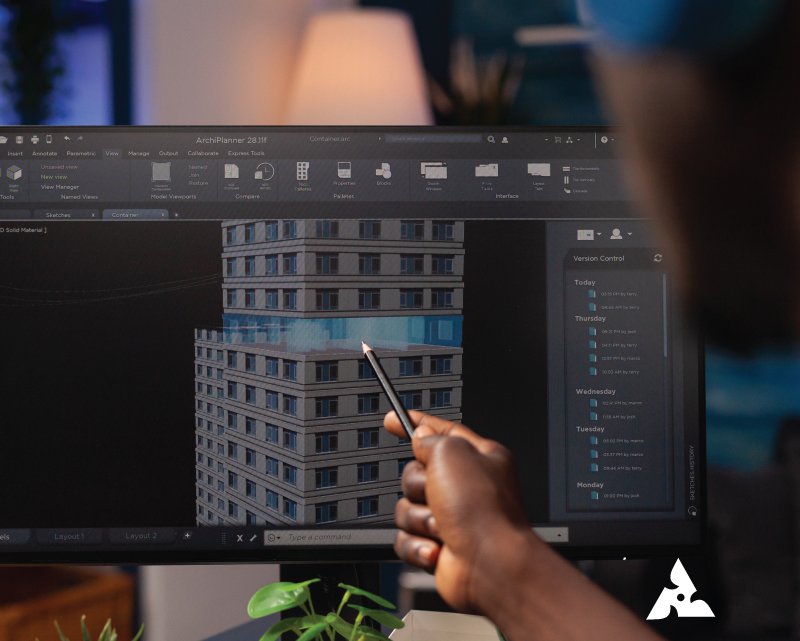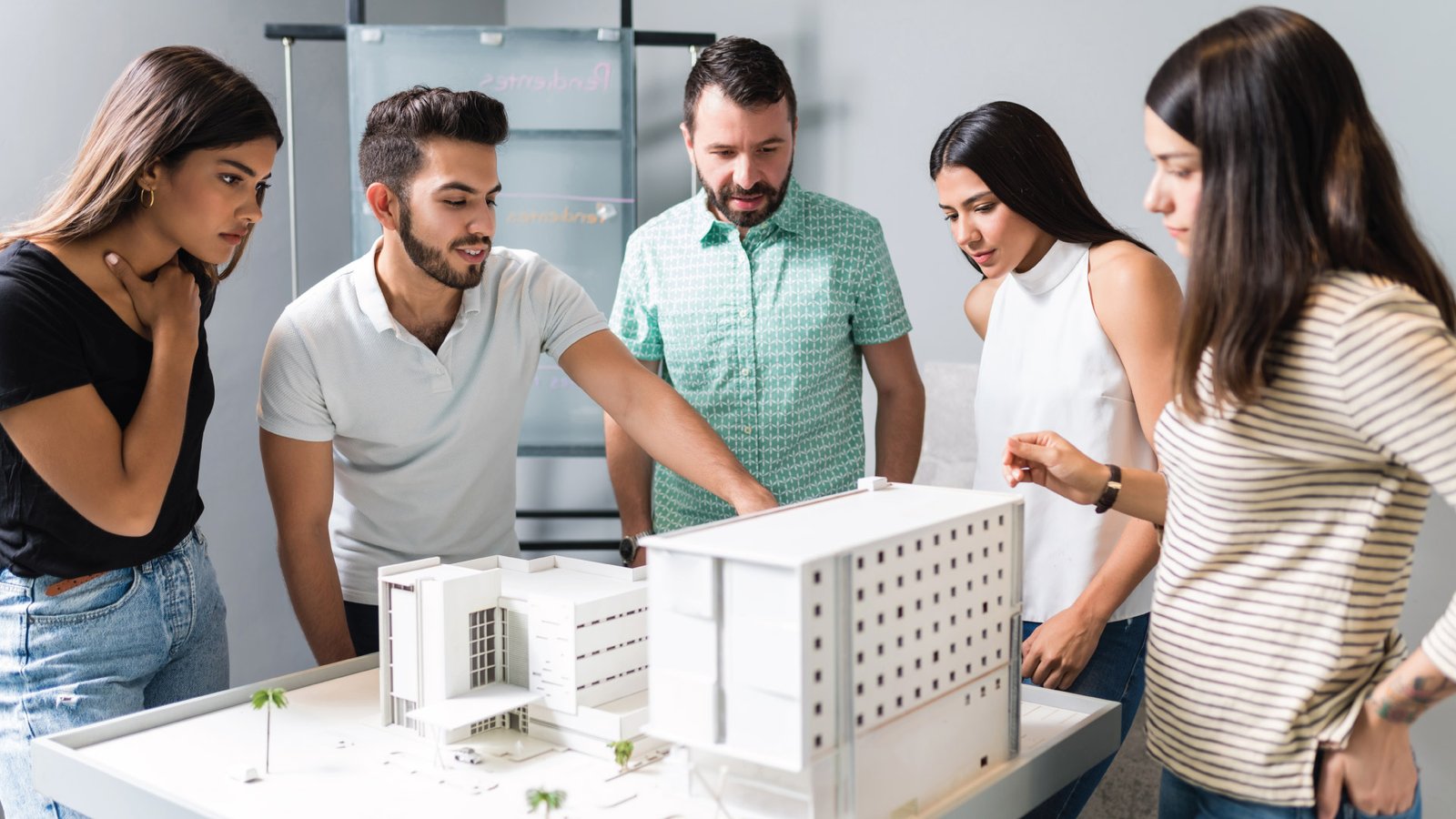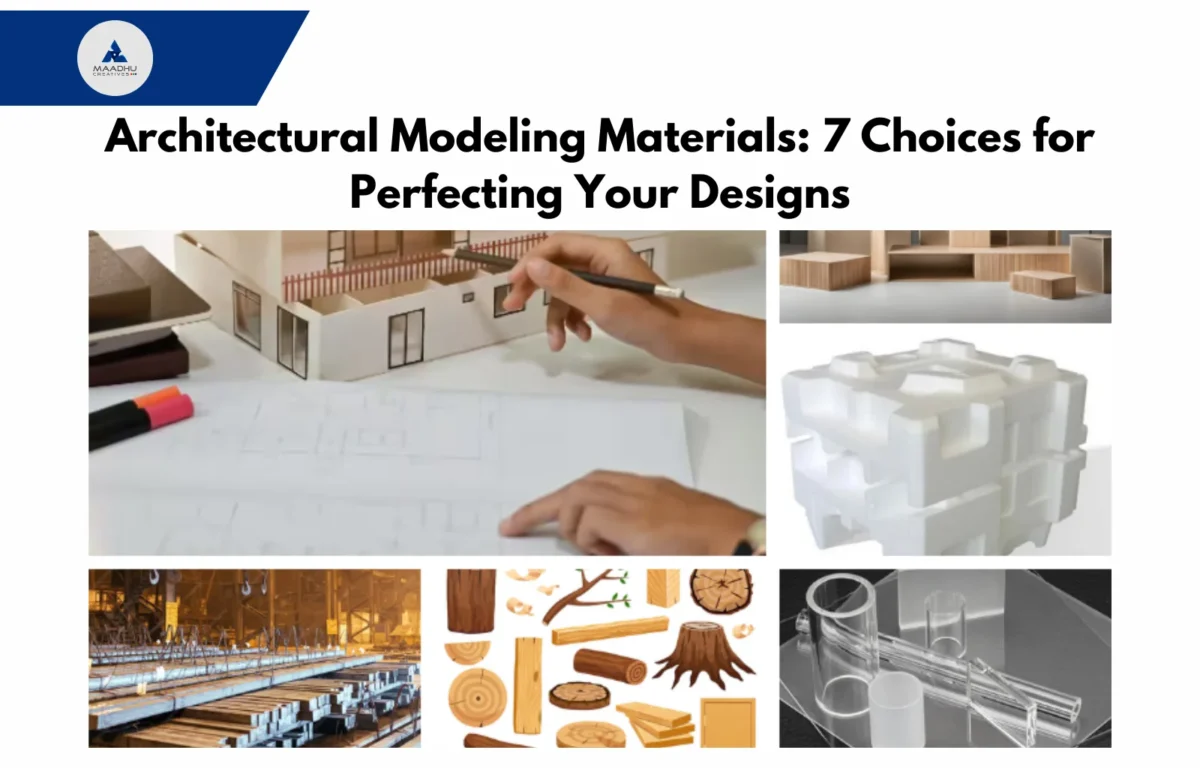Architectural Model Materials: 7 Choices for Perfecting Your Designs
Table of Contents
Architectural models are crucial tools in design, helping to visualize and refine building concepts before construction begins. These models allow designers to explore and communicate their ideas more effectively. A variety of materials can be used to create these models, each offering different benefits and possibilities. In this blog, we’ll delve into the top seven materials commonly used in architectural modeling, discussing their features and why they are favored by designers.
Foam Boards for Architectural Models

Foam boards are a favorite among those who create architectural models because they are both versatile and easy to work with. These boards consist of a foam core enclosed between two layers of paper or plastic. They come in different thicknesses and sizes, allowing you to tackle a wide range of projects, from straightforward designs to more detailed and complex models. This flexibility makes foam boards an excellent choice for anyone looking to build precise and adaptable architectural models.
Why Foam Boards Stand Out:
- Ease of Use: Foam boards are straightforward to cut and shape with a utility knife or foam cutter. This simplicity allows model makers to achieve precise designs without much hassle.
- Cost-Effective: Foam boards are relatively inexpensive compared to other materials, making them a budget-friendly option for both educational and professional projects.
- Lightweight: Their light weight makes foam boards easy to handle and transport, which is beneficial for moving models between locations or during presentations.
Foam boards are excellent for constructing the base structure of a model and adding essential details like walls and roofs. Their affordability and ease of use make them a go-to choice for many model makers.
Transparent Materials / Plexiglas For 3d models
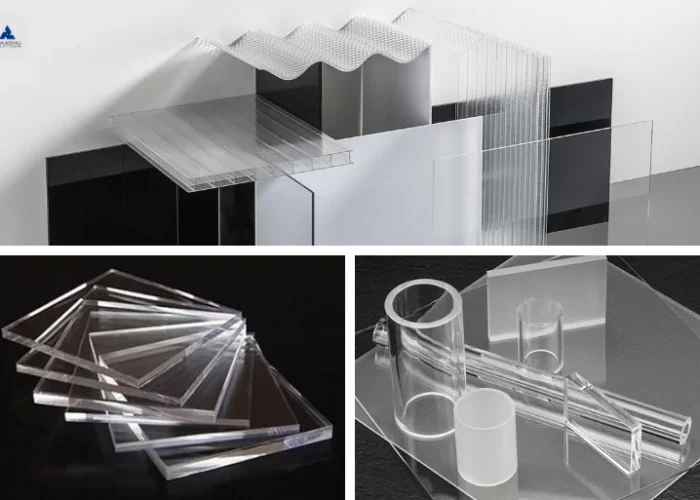
Transparent materials like Plexiglas, often called acrylic, are used to show glass features in architectural models. Plexiglas is clear, so it looks just like glass, which helps in visualizing how the real building will appear with glass windows and walls. Using Plexiglas in your model gives a realistic preview of how these transparent parts will look in the finished design.
Benefits of Plexiglas:
- Realistic Look: Plexiglas provides a clear, glass-like appearance, helping to visualize how transparent features like windows and facades will look in the finished building.
- Durable: Unlike traditional glass, Plexiglas is more resistant to shattering, making it a practical choice for models that need to endure handling and transportation.
- Customizable: It can be easily cut and shaped to fit various parts of the model, allowing for detailed and precise glass features.
Incorporating Plexiglas into a model helps to illustrate features such as windows and skylights, enhancing the realism and functionality of the model.
Plywood and Cardboard For Model making
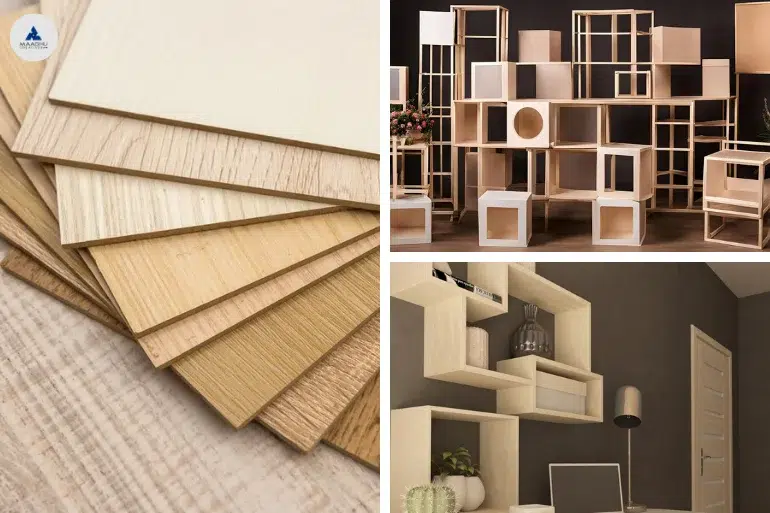
Plywood and cardboard are classic materials used in architectural modeling. Plywood, made from layers of wood veneer glued together, is known for its strength and durability. Cardboard, made from recycled paper, is flexible and lightweight.
Advantages of Plywood and Cardboard:
- Strength and Longevity: Plywood is robust and maintains its shape well, making it ideal for creating sturdy and long-lasting models. Cardboard is more suited for simpler or temporary models due to its less durable nature.
- Versatile Finishing: Both materials can be painted, stained, or covered with other materials, allowing for a variety of finishes to match different design needs.
- Flexible Sizes: Available in various sizes and thicknesses, plywood and cardboard can be customized to fit different parts of a model.
These materials are useful for building the structural components of a model. Plywood is great for detailed, durable work, while cardboard is ideal for cost-effective and temporary designs.
Woods Natural Material for model making
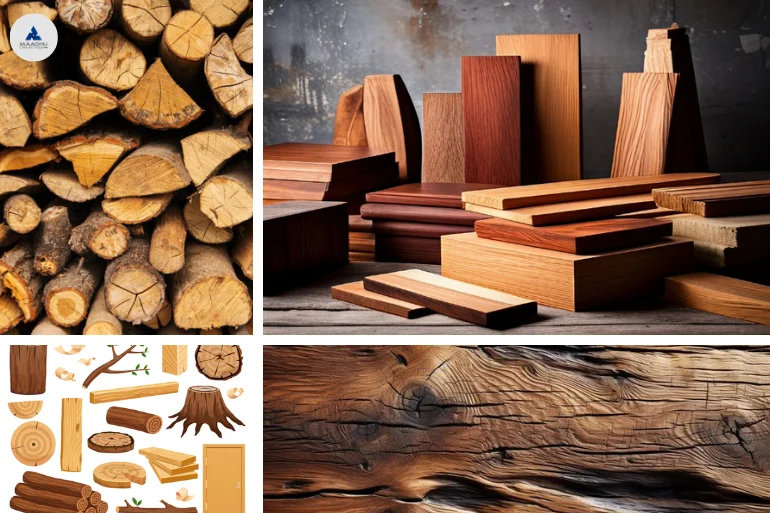
Wood is a traditional and valued material in architectural modeling. It brings a warm, authentic feel to models and is strong enough to hold up well over time. Depending on the specific requirements of your model, you can choose from various types of wood. Solid wood, veneer, and balsa wood each offer distinct advantages and are chosen based on the details and functions needed for your project.
Why Wood is a Good Choice:
- Natural Look: Wood adds a realistic and authentic appearance to models, making it ideal for designs that incorporate natural elements.
- Durable: Wood is sturdy and can handle frequent handling without losing its shape or detail.
- Detail-Oriented: Wood can be carved and shaped to create intricate designs, adding a high level of detail to the model.
Wood is often chosen for high-quality models where a realistic and polished look is essential. Its durability and natural beauty make it a valuable material for professional presentations.
Foam and Polystyrene

Foam and polystyrene are favored for their light weight and ease of manipulation. Foam comes in various densities and can be easily cut and shaped, while polystyrene is a rigid plastic foam known for its strength.
Benefits of Foam and Polystyrene:
- Easy Shaping: Both materials are simple to cut, carve, and glue, making them suitable for creating complex shapes and details.
- Lightweight: These materials are lighter than many others, making them ideal for large models or ones that need to be transported often.
- Cost-Effective: Generally affordable, foam and polystyrene offer a budget-friendly option for various projects.
Foam and polystyrene are excellent for building large-scale models or detailed components. Their ease of use and affordability make them practical choices for many model makers.
Metal

-
Metal, such as brass or aluminum, is used in architectural models to add precision and elegance. Metal parts are often used for structural details and fittings. Although less common, metal is valuable for specific applications.
Advantages of Metal:
- High Precision: Metal allows for very accurate cuts and details, making it ideal for fine architectural features.
- Durability: Metal components are strong and can endure handling without losing their shape or details.
- Elegant Finish: Metal adds a sleek and polished look to models, suitable for high-end presentations and prototypes.
Metal is often used to highlight key features or structural elements in a model. Its strength and precision make it a valuable material for adding a professional touch.
Surrounding Elements
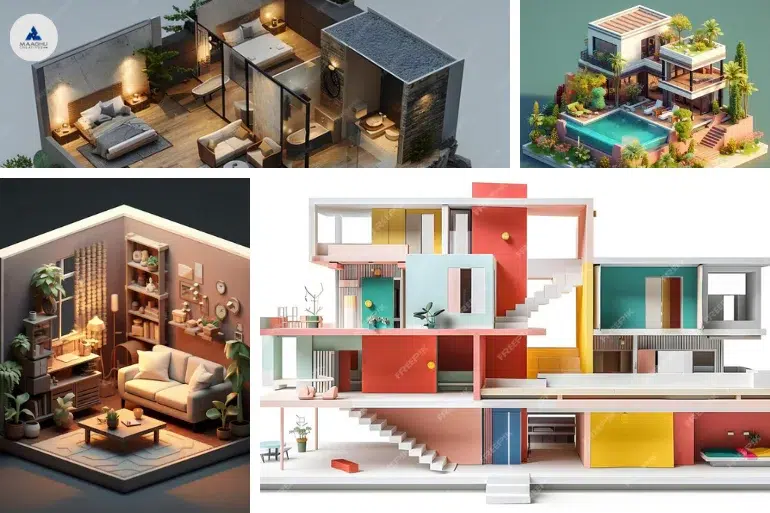
Surrounding elements are crucial for adding context and realism to architectural models. These include landscaping materials like grass, trees, water features, and miniature people, cars, and furniture.
Why Surrounding Elements Matter:
- Enhanced Realism: Adding details such as trees and people helps to visualize how the building will fit into its environment and interact with its surroundings.
- Contextual Clarity: These elements provide a sense of scale and context, helping viewers understand the size and impact of the design.
- Visual Appeal: Surrounding elements make the model more engaging and highlight key design features effectively.
Incorporating these elements into a model enriches its overall realism and helps convey the complete scope of the design. They assist in imagining how the finished project will look in its real-world setting.
Conclusion
Picking the right materials for your architectural models is key to making them both functional and visually appealing. Each material, whether it’s foam boards, Plexiglas, plywood, wood, foam, or metal, has its own set of benefits that can help you achieve different aspects of your model. Adding in surrounding elements like mini trees or cars makes the model look more realistic and shows how the design fits into its environment. By knowing what each material can do, you can build models that not only work well but also look impressive and communicate your ideas clearly. Whether you’re a professional architect or a student just starting out, choosing the right materials will make your architectural projects stand out and bring your designs to life.
FAQ's
For beginners, foam boards and cardboard are ideal. They are easy to cut and shape, and they are cost-effective. These materials allow newcomers to practice and learn without a significant investment.
Yes, you can use regular acrylic or latex paint. However, applying a primer or sealant first can prevent the paint from soaking in or causing warping.
To achieve precise cuts on Plexiglas, use a fine-toothed saw or a specialized acrylic cutter. Mark your cuts carefully and use a straightedge to guide the cutting tool for accuracy.
Metal provides high detail and precision, durability, and a professional finish. It is ideal for highlighting key features and creating an elegant look in high-quality presentations.
Surrounding elements add realism and context, making the model more engaging and helping viewers understand the building’s scale and environment. They also highlight key design features and improve overall presentation.


